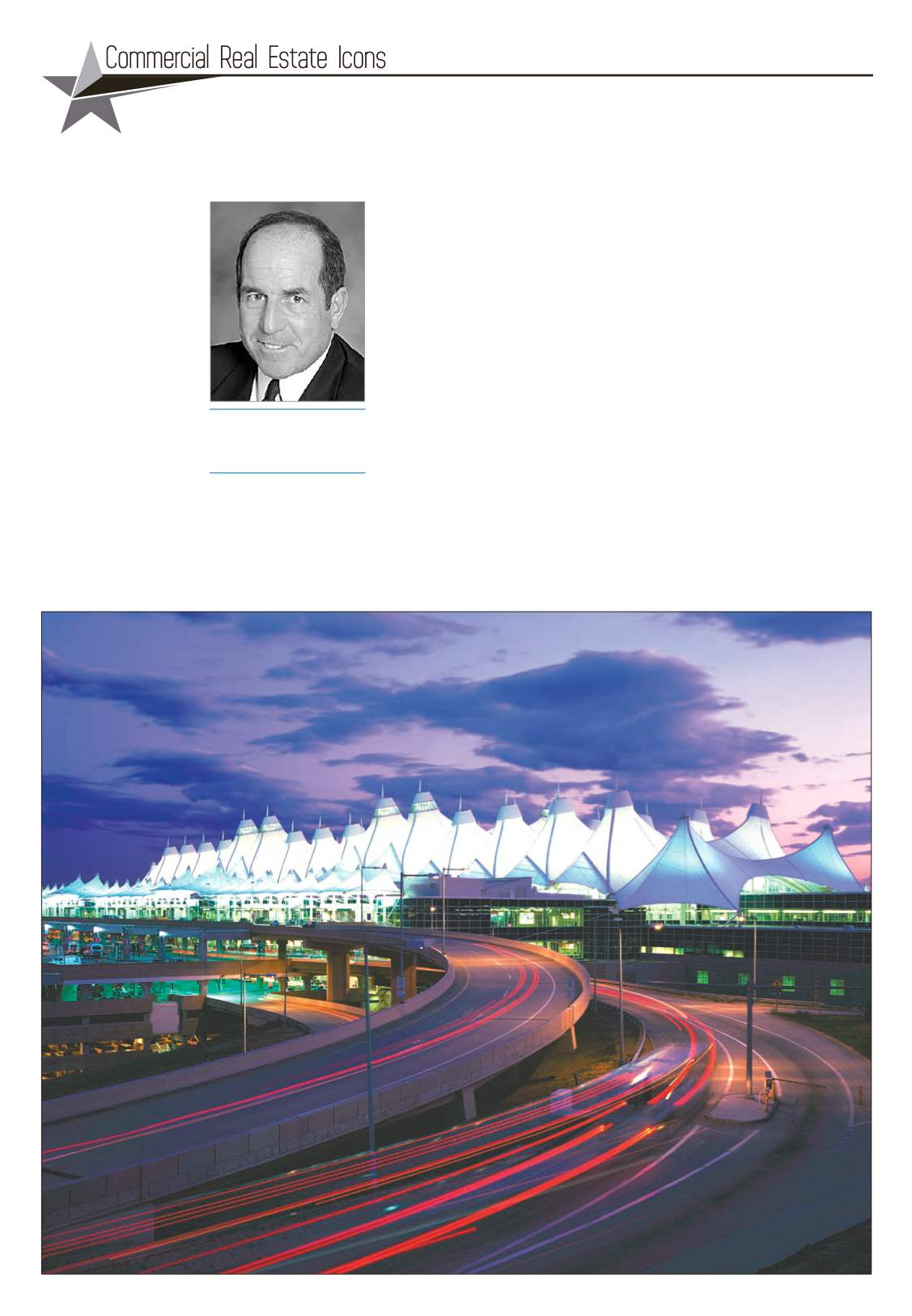
Page 18B —
COLORADO REAL ESTATE JOURNAL
— December 16, 2015-January 5, 2016
A
fter watching the
commercial real
estate market come
of age over the last 50 years,
I was challenged to fulfill the
assignment of identifying
commercial real estate
developments that made a
difference in Colorado.
The first part of the
assignment was to establish a
definition of what it was that
made a development something
that made a difference. The
initial criteria had to be size.
The development had to be
one that not only represented
a flagship building but also had
the size and scale to allow for
many buildings then and now as
well as in the future – in a word,
a campus.
Next, the development should
have been the vision of one or
many people, all of whom were
committed to the challenges of
raising the necessary capital to
get the project off the ground,
working with community
leaders to obtain the necessary
land entitlements and making
sure the infrastructure was in
place to allow for the long-
term growth envisioned by
the projects’ visionaries. The
vision never limits itself to a
single piece of construction.
The vision calls for progressive
growth over a period of several
decades.
A development that makes
a difference becomes “iconic”
over time. Often it is a flagship
building or a marquee sign
that, due to high visibility,
becomes so well-known that
the very mention of the
development provides a basis
for a conversation in which the
participants begin speaking with
a base of knowledge that comes
from quick and familiar identity
of the project; thus, everyone
starts the conversation by being
on the “same page.”
Transportation corridors
are an integral and important
condition of these campuslike
developments. Once,
transportation corridors were
basically limited to major
arterial streets like Broadway
or 17th Street downtown. Now,
any discussion of transportation
corridors includes not only the
automobile and freeways, but
also, almost equally importantly,
Regional Transportation District
and transit, bicycle lanes and,
more recently, accessibility by
pedestrians located in nearby
housing developments.
A real estate development that
makes a difference functions as
the basis for gathering people
together. These people take
on different profiles. Many are
employees of the companies
that operate within the campus.
These people may educate,
create technology, process
information, or provide services
or entertainment to a vast
number of students, clients,
customers or visitors. Whatever
the case, tens of thousands of
people regularly visit on a daily
basis and, depending on the
situation, that number might
easily increase to well over
100,000 on a given day.
The sheer size of the
development makes it an
economic engine by itself.
We used to think of such
developments in geographic
terms, such as downtown. But
the tremendous growth of the
metro Denver area has brought
the population to nearly 3
million, a number too big to be
confined to one single location.
This population requires space
in which to live, work and play
in a location that provides a
mixture of uses that all fall
within the general definition
of office, retail, industrial and
the noncommercial component
of residential. Thus, recent
demand for individual projects
has been stimulated to include
requirements for all of the
previous property types as
well as other, more specialized
uses, such as hospitality, senior
housing and entertainment.
Here are a number of metro
Denver’s iconic developments
that fall within the definitions
outlined above. All of these
commercial developments made
a difference when they were first
constructed and will continue
to be drivers for change in the
future:
• Denver International Airport
• Auraria Higher Education
Campus
• University of Colorado
Hospital/Anschutz Medical
Campus and Fitzsimons
Innovation Campus
• Union Station
• Denver Tech Center
• Coors Field
Brad Neiman
Principal, Brad Neiman Associates,
Denver
Photo provided by Denver International Airport
Denver International Airport


